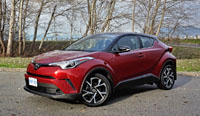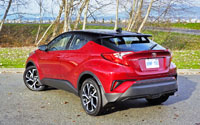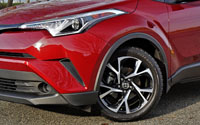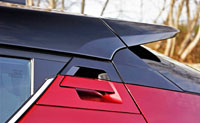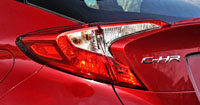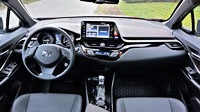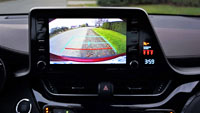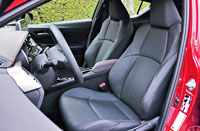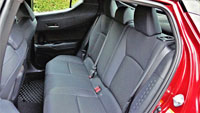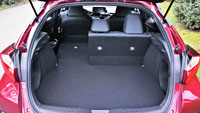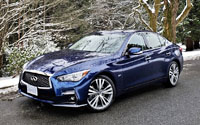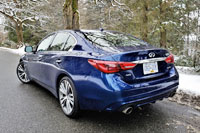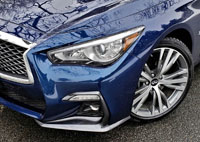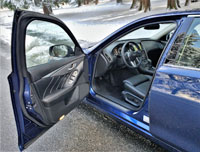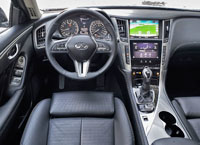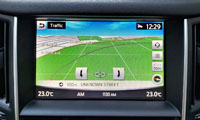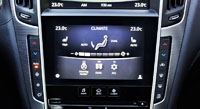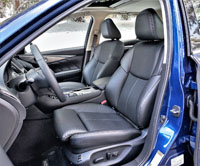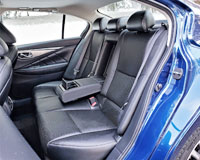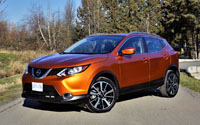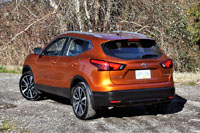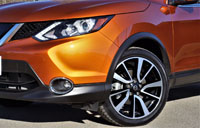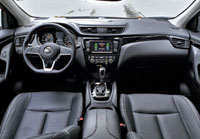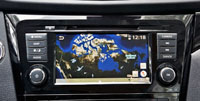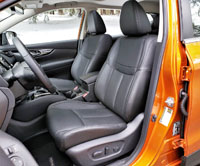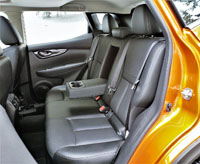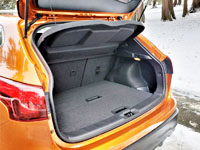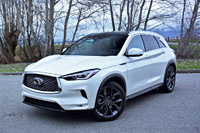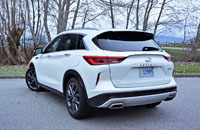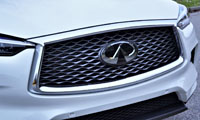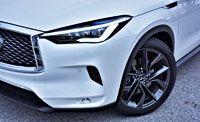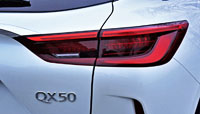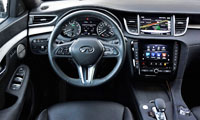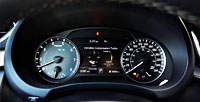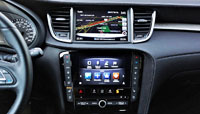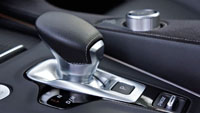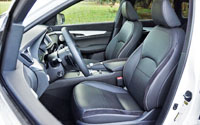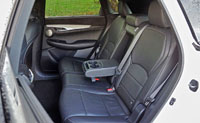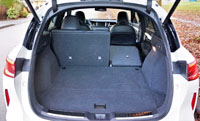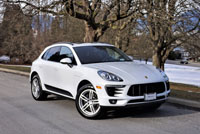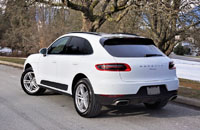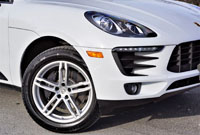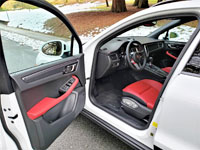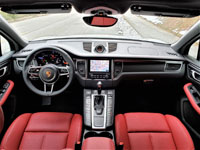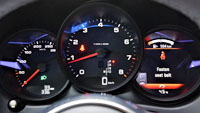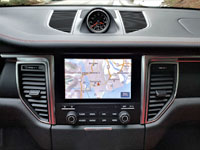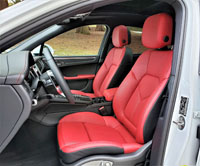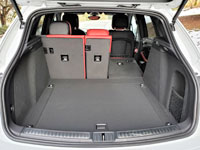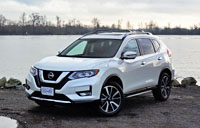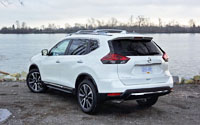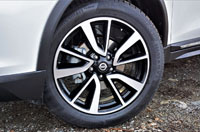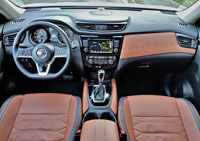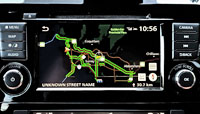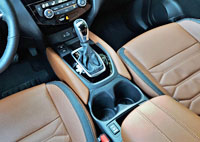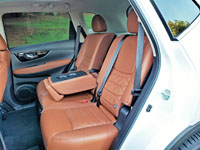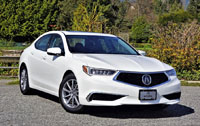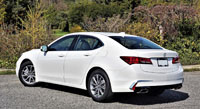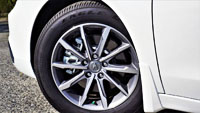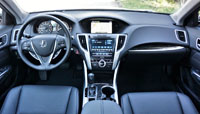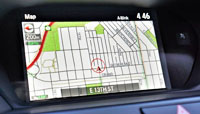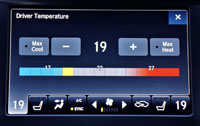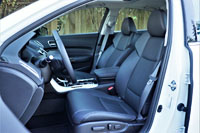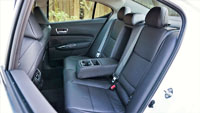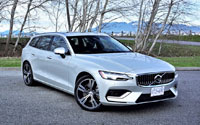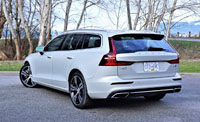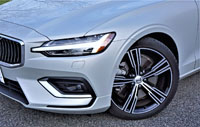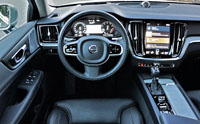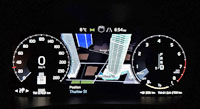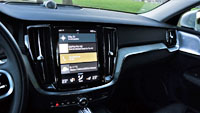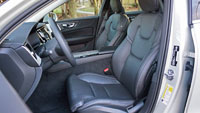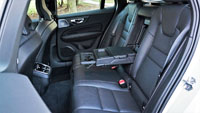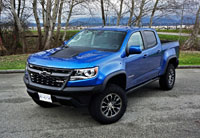
The Colorado ZR2 is one wicked looking pickup truck. Chevrolet got the design just right, and together with its beefy styling and rugged suspension, GM’s most popular brand has brought one impressive off-road race replica to market.
To be clear, Chevy wasn’t first to this market sector and certainly won’t be the final entry. While there are probably others I should mentioned, Dodge’s Power Wagon was one of the street-capable off-road race truck initiators, although today’s 4×4 fans will likely point to the 2010 Ford F-150 SVT Raptor as first on the scene, as far as OEM custom off-roaders go.
Fiat Chrysler Automobiles’ (FCA) Ram brand has tried to answer back with its 2016 to present 1500 Rebel, which is much like previous Power Wagons with bolder frontal styling, while Toyota arrived a few years ago with its Tundra and Tacoma TRD Pro packages, the latter recently adding a snorkel-style air intake that makes it appear like it can swim across rivers, through mud holes, or any other deep, liquid barrier.
Right about now I should also draw your attention to the fresh new 2020 Jeep Gladiator, which when suited up in Rubicon trim might be the most credible 4×4 in the mid-size pickup category (it’s definitely has good roots), while delivering payload and trailering capacities that compete well too.
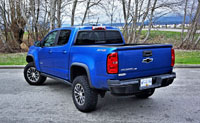
While I’m covering all of these trail-rated cargo (and family) haulers I need to mention Chevrolet’s recently re-skinned Silverado that can be specified in new Trail Boss trim with a two-inch lift kit, improving off-road capability over its GMC Sierra Elevation cousin, but other than this the Trail Boss is mostly about cosmetics, whereas Nissan offers tough Pro-4X trims on its aging Frontier and more up-to-date Titan half-ton and heavy-half Titan XD models. Lastly, Honda offers its Ridgeline with a Black Edition and… well… it’s no CRF250X, let alone ZR2 rival.
The Gladiator Rubicon and Tacoma TRD Pro are the only mid-size ZR2 competitors capable of whacking through the wilderness (GMC’s Canyon doesn’t provide anything quite as 4×4-worthy), and the Chevy can be made even more capable with its Bison upgrade package, yet all of the above deserve comment (including the 2018 to present Ford Ranger Raptor that’s now getting snapped up by wealthier off-road enthusiasts in Asia).
Obviously size matters, with the North American Raptor, the Rebel (Power Wagon), the Tundra, and the Silverado/Sierra fraternal twins being full-size models, and the Tacoma, Ranger, Frontier, and this Colorado (plus the Canyon) more compact in their mid-size proportions.
Another big differentiator is the powertrains on offer, and being that this review is about a mid-size model I’ll focus on its key rivals, with most incorporating four-cylinder and (when equipped to compete off the beaten path) V6 gasoline-powered engines. The two GM mid-size trucks do likewise, but they also buck tradition by adding a high-torque, fuel-efficient turbo-diesel mill.
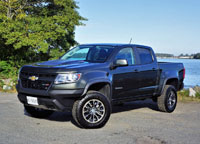
So, let’s focus in on the standard and optional ZR2 powertrains and how each measures up when compared to its Jeep and Toyota challengers, and then factor in some of their 4×4-related features. For starters, I spent a week with each engine, starting with a greyish Deepwood Green Metallic painted one that’s in fact a 2018 model (I’ll talk about the differences later in this review). This optional colour was cancelled for 2019, but the superb 2.8-litre Duramax turbo-diesel four-cylinder under its bulging hood remains. It makes 181 horsepower and a best-in-segment 369 lb-ft of torque from a mere 2,000 rpm, and comes paired to a strong six-speed automatic transmission.
It’s fuel-efficient compared to rivals thanks to a 12.5 L/100km city, 10.7 highway and 11.7 combined Transport Canada rating, but whether or not its stingy enough to justify its lofty $4,090 price tag will depend on the number of years and kilometres you plan to employ its service, or if you really want to take advantage of its efficiency for travelling farther into the wild yonder than gasoline-powered 4×4 owners dare go, or if you appreciate the tractability of its massive torque when trekking into said wilderness more than the immediate power its V6 offers.
Behind the blackened grille of the Kinetic Blue Metallic painted (a $495 option) 2019 ZR2 is the standard 3.6-litre V6 that produces 308 horsepower and 275 lb-ft of torque from 4,000 rpm. Just like the diesel, the V6 powers the rear axle or both diffs via part-time four-wheel drive, but unlike the diesel the standard engine’s gearbox is an even more economical eight-speed unit. The combo results in an estimated 15.0 L/100km in the city, 13.0 on the highway and 14.1 combined, partly due to cylinder deactivation when less performance is needed, and while decent it’s hardly the GM engine of choice for driving past pumps.
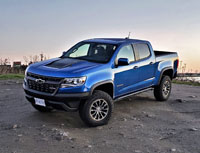
The Gladiator, on the other hand, only comes with FCA’s 3.6-litre V6, which makes 285 horsepower and 260 lb-ft of torque. That’s off by 23 horsepower and 15 lb-ft when compared to the base ZR2 V6, although it offers up a standard six-speed manual (no such luck with the ZR2) or alternatively an eight-speed auto, plus part-time 4WD, and comes with a Transport Canada rating that ranges between 10.4 and 14.1 L/100km city/highway combined depending on trims and transmissions.
As for the Tacoma TRD Pro, it’s standard with Toyota’s well-proven 3.5-litre V6 that puts out 276 horsepower and 265 lb-ft of torque, which is down some 32 horsepower and 10 lb-ft of torque on the V6-powered ZR2, and mates up to a six-speed manual or a six-speed auto plus part-time 4WD, while achieving city/highway combined fuel economy ranging from 11.9 to 12.9 L/100km, depending on transmissions and cabs.
All of the above V6s will outrun the Duramax turbo-diesel by significant margins, something I immediately noticed when setting out in the 2019 Colorado, but the advantage of the diesel’s 109, 104 and 94 lb-ft of torque advantage when compared to the Gladiator, Tacoma and ZR2 V6 respectively, gives the diesel big advantages on the trail, plus of course its 11.7 city/highway combined fuel economy that can only be beaten by one single Gladiator trim (and I’d be shocked to witness the FCA V6 winning out in real-world back-to-back tests).
Engine torque is important when off-road, but there are other factors that are even more important when leaving pavement, such as ground clearance, front and rear overhangs, and wheelbase length to name a few. The Tacoma provides the shortest wheelbase at 3,236 mm (127.4 in), but its 5,392-mm (212.3-in) nose-to-tail length means its overhangs are more pronounced, resulting in a truck that won’t hang up as easily when scaling sharp crests or other obstacles, but will probably scrape its front and rear bumpers when approaching a steep incline or levelling off after a radical decline. By comparison, the Colorado’s wheelbase is nearly as short at 3,258 mm (128.3 in), but improves on approach and departure angles with the shortest overall length of 5,347 mm (210.5 in), whereas the Gladiator has the longest wheelbase by far at 3,487 mm (137.3 in), plus it measures a limousine-like 5,537 mm (218.0 in) from front to back (ok, not quite as long as a limo, but you get my drift).
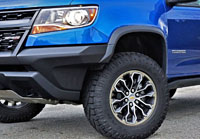
To clarify, I’ve only tested the 2018 and 2019 ZR2 models plus a 2017 Tacoma TRD Pro (it now includes the aforementioned snorkel and a number of other improvements), so I can’t offer a full critique of the latest TRD Pro or the Gladiator. As noted earlier, I had a version of the 2018 ZR2 with the Duramax Turbo-Diesel for a week, plus spent a week with a 2019 V6-powered variant, and mostly drove them around town and within suburban, rural areas on tarmac, but also took both out on the trail, the latter deep diving in hood-high standing water. I tested the previous Tacoma off-road too, and I had no trouble negotiating the chosen trail, but being a different location and a long time ago (two years is eons in vehicle development time), a direct comparo wouldn’t be fair.
On that note I hope to test a Gladiator Rubicon this summer, and you can bet I’ll be getting it as dirty as possible when I do. It features a disconnecting front sway bar to help with articulation (something I first experienced in a Ram Power Wagon, and is now also part of the Ram 1500 Rebel upgrade), plus it uses the Wrangler’s solid front axle that’s considered an improvement over the independent front suspensions used by the ZR2 and most other modern pickup trucks. Of course, I’ll make sure to use experiences from my ZR2 tests as part of my future Gladiator review.
Like the first 2017 Colorado ZR2 and the greenish-grey 2018 turbo-diesel model partially reviewed here, the newest 2019 ZR2 receives the same substantial increase in ride height, and therefore gets the same 50-mm (2.0-inch) increase in ground clearance, while any high-speed handling negatives are offset by 90 mm (3.5 inches) of increased front and rear track, plus stiffer new cast-iron lower front control arms, and a unique set of 8- by 17-inch alloy wheels wrapped in 31-inch Goodyear Duratrac off-road rubber.
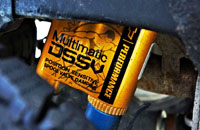
What’s more, a 1.0-inch-diameter solid anti-roll bar replaces the usual 1.5-inch hollow one, improving suspension articulation, while last but hardly least are special Multimatic DSSV Position Sensitive Spool Valve Damping Performance shocks that help cushion the otherwise jarring impacts of rocks, roots and other obstacles you might find along an ungraded back road or trail (the TRD Pro utilizes Fox-sourced shocks, by the way, which are rated highly as well).
The skid plates below and tubular rocker extensions at each side are easier to see, both having been designed to protect vulnerable components beneath as well as low hanging bodywork, but the ZR2’s matte black grille and even more aggressive black domed hood make it even more noticeable to onlookers, not to mention its rugged black bumpers that get abbreviated at each corner to improve approach and departure angles, and extended black fender flares that make room for its all-terrain rubber.
The local 4×4 park chosen is one I test trucks and SUVs on regularly, so I’m familiar with its plentiful obstacles. While difficult for many presumed off-roaders, most of its challenges are a cakewalk for the ZR2, but were still intimidating without a spotting crew to guide me through. During the diesel’s mostly dry afternoon I was able to drag the rear-mounted spare tire over some deep rutted knolls plus up and down some steep terrain, once again finding ground at the rear (but not the front), while I was able to lift the left rear into midair and leave it there spinning (a silly thing some 4×4 fans do for kicks), and while there was a lot more skill remaining in this truck than my dirt playground could not fully extract, I was able to prove that the ZR2 is capable enough for serious off-road duty, yet still plenty comfortable.
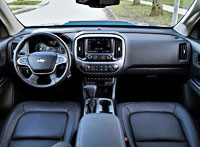
The second off-road adventure with the 2019 ZR2 came mid-winter, on a particularly cold and rainy day. Rain means mud at best and massive pools of standing water at worst (or maybe best, depending on how you look at it). The steep grades that were child’s play before required locking both front and rear differentials now (just like with the Gladiator, albeit not so with the Taco TRD Pro that only includes lockers at the rear), but doing so allowed easy control all the way up and all the way down. Even better, partway into a 50-foot puddle my heart started to race when the truck’s front end slipped deeper into a set of ruts, forcing dirty water across the top of the hood and even onto the windshield, but a steady foot on the throttle allowed the meaty tires to keep momentum up, and the ZR2 pulled me to the other side without fanfare (other than my pounding heart). At that point I was wishing I’d had the TRD Pro’s snorkel, but obviously the ZR2 didn’t need it, this time around at least.
The thought of swamping an engine (which would void the warranty) makes the $6,980 need for the ZR2’s Bison package seem cheap. Of course, the Bison package wouldn’t have necessarily helped in this situation (it really should include a snorkel, if not just for style points), and I can’t say I’d want the ZR2 in Red Hot paint (I’d rather have the option of colours), but it gets design points for its bold “CHEVROLET” emblazoned grille (similar to the Raptor’s “FORD” grille replacement), unique AEV (American Expedition Vehicles) front and rear bumpers (the one up front capable of accepting a winch), the beefier black extended fender flares, special 17-inch AEV alloy wheels, fog lights, contoured front and rear floor liners, and about 90 kilograms (200 lbs) of super-strong boron steel AEV skid plates (front, transfer case, fuel tank, and rear differential) to better protect its vital components.

Of course, the ZR2 is still extremely capable without Bison upgrades, and quite a standout in the styling department too. The regular Colorado a bit tame to my eyes, at least when compared to most competitors, specifically the latest Tacoma and new Gladiator, but the ZR2’s bulging domed matte black louvered hood, redesigned matte black front bumpers and rear bumpers, exposed skid plates, robust tubular rocker protectors, and other trim upgrades give it a tougher look. Look beyond the machine-finished 17-inch alloy wheels with black-painted pockets and you’ll be able to see the bright yellow Multimatic dampers, unless they’re covered in dirt.
The ZR2’s lack of side steps might look good and not hang up on protruding trail debris, but it hampers access for shorter folk like me. There aren’t any Corner Steps on the back bumper to provide a leg up to the bed either, these issues being the only complaints I have against this special model.
Once inside I enjoyed the view provided by the aforementioned ride height and the Colorado’s inherently great sightlines in all directions. This helps in traffic, of course, possibly even giving you the edge needed to find your way up to the front of the pack. There’s where you’ll enjoy V6 performance, the larger of the two being a good choice for those wanting power over fuel efficiency. The V6 delivers a decided jump off the line and then keeps up the pace right up to legal highway speeds and beyond, while the diesel only jumps off the line initially, and simply can’t maintain the same level of forward thrust as its revs rise. This will be just find for diesel enthusiasts like me, because the engine helps it feel more like a work truck capably going about its business, and of course it pays big dividends when it comes time to fill up.
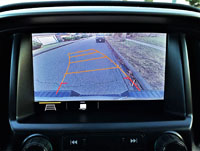
Colorado ZR2 buyers won’t have to make a choice about handling, fortunately, because both engines manage corners equally well. Even with its increased suspension, or possibly because of it, the ride is fairly smooth and quite comfortable, unless jumping curbs. Those slightly firmer Multimatic dampers, which work so very well off-road, also help to reduce body roll at higher speeds on pavement, resulting in a truck that’s surprisingly athletic through high-speed serpentine curves, unless you’re attempting to go quicker than anything so top-heavy and obviously 4×4-focused is supposed to go. Braking is pretty good too, but once again we shouldn’t get in over our heads. The ZR2 weighs in at 1,987 kg (4,381 lbs), and more when upgraded with the aforementioned Bison package, so judge stopping distances accordingly.
As per usual I only pushed the ZR2 hard during testing, and no matter the surfaces driven over or the speeds attained, the driver’s seat was comfortable and supportive. I especially appreciated the lateral support provided by its big side bolsters, which stopped me sliding sideways on what could have otherwise been slippery leather.
The upholstery was dyed black as usual, albeit highlighted with a red embroidered “2” as part of the otherwise black “ZR2” insignia on the headrests. The ZR2’s steering wheel receives no such name recognition, but it has a meaty rim that’s wrapped in soft and comfortable leather, with grippy baseball-style stitching in the middle. Other than its four-spoke design it appears more like the type of sport steering wheel you’d find in a performance car, and thanks to the generous reach of its standard tilt and telescoping steering column I fit in perfectly. I was able to sit upright with the steering wheel perfectly positioned for my long-legged, short torso, five-foot-eight, slight-build body, safely and comfortably with my hands at the optimal nine and three o’clock positions, further allowing an easy reach to the pedals below and once again, great visibility all-round.
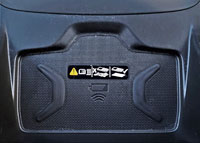
The rear seating area of this Crew Cab, short box configured ZR2 (the ZR2 can also be had with an Extended Cab and a long box) is roomy for adults (and kids) of all shapes and sizes. When the driver’s seat was positioned for my height, there was still about five inches in front of my knees and more than enough room for my feet, plus I had another three to four inches over my head, and five inches from my shoulders and hips to the door, plus I’d guess you could seat a smaller person comfortably between the two outboard positions. With only two in back, more comfort can be accessed via a wide centre armrest filled with large cupholders that include rubber grips to hold cups or bottles in place. Other handy features include twin rear USB ports and a 12-volt charger.
If you want to keep your gear dry and safe from theft, the rear seat headrests fold forward and the backrests tumble flat so you can lay your belongings on top, or instead you can lift the lower seat cushion up to expose a storage compartment underneath, this complete with every tool you’ll need to lower the spare tire from below the bed and then change the wheel.
Seats and armrests aside, the ZR2 doesn’t offer any soft, pliable composite surface treatments in the rear, but back up front the dash top receives a nice soft paint to absorb sound and make it more appealing to touch, as does much of the instrument panel. It should also be noted this isn’t the priciest trim in Chevy’s Colorado fleet, due to being optimized primarily for off-road purposes, but it was certainly nice enough for this class of truck. On the positive are some attractive metal-like accents around the centre stack and lower console, plus the door handles and armrests. The door handles inside are chromed too, as are the centres of some knobs on the centre stack.
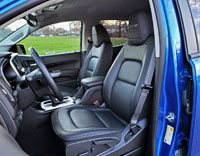
The primary gauge cluster is legible in all lighting conditioned thanks to bright background lighting and good shielding from sunlight. It’s filled with the usual tachometer to the left and speedometer on the right, with a fuel gauge and engine temperature meter topping off a fairly large 4.2-inch high-resolution colour multi-information display just below at centre.
The latter is controlled with a pad of four arrows on the right-side steering wheel spoke, which when pushed provides a bright menu of multicoloured functions including info, audio, phone, navigation, options, and more, while the navigation system provides directions within the gauge cluster’s multi-info display where they can be seen more easily without removing eyes too far from the road ahead, with more detailed mapping shown on the large 8.0-inch infotainment touchscreen over on the centre stack (this 8.0-inch display is now standard with all Colorado trims except the base Work Truck or WT that still does ok with its new 7.0-inch touchscreen).
That larger touchscreen includes Chevy’s well laid-out, bright, and colourful HD menu display that seems as if it was inspired by Apple’s iPhone/iPad, which I think is a good thing, but if you want something even more inline with Cupertino you can plug your phone into a specified USB to access the standard Apple CarPlay app, or alternatively Android Auto (although I don’t like it anywhere near was much). I’m glad that Chevy gives us these smartphone connectivity alternatives, while also featuring an audio system that can be easily connected to a phone with Bluetooth wireless streaming, or alternatively you can listen to satellite radio, plus all the classic AM/FM/HD radio stations.
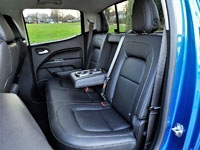
The navigation system worked well, with accurate routing and nicely detailed mapping that was easy enough to sort out. I only wished that it warned me of a turn sooner, but instead it gave instant notice and even then the directions were in black and white and fairly small, making them hard to make out. Larger, brighter and in colour would’ve been ideal, and saying something like “Turn right in 50 meters”. I liked that the infotainment system received text messages and provided a number of stock responses for communicating safely while driving, while other useful apps include OnStar, traffic info, and shopping (not sure about that last one while driving though).
Along with navigation, the ZR2 includes a fabulous high-definition backup camera with active guidelines (but in need to inform you the Gladiator’s reportedly has front and rear trail cams that can even be cleaned via the infotainment system), with some other standard ZR2 features including a phone charging pad placed just in front of the centre armrest (standard with Z71 trim and above), plus a USB port inside the armrest if your phone needs wired power. Chevrolet also provides two more USB ports (one supporting new USB C-type devices) and an aux port, plus an available SD card reader, within another storage bin at the base of the centre stack, allowing you and your devices to be well cared for. Finally, the latest Colorado includes a second microphone mounted closer to the front passenger to improve the voice quality of Bluetooth hands-free connected phones, while a personal favourite had nothing to do with connectivity, but rather the ZR2’s heated steering wheel that warmed my hands on some cold winter mornings, this now standard with all trims above the LT.
Speaking of warmth, standard ZR2 features include GM’s superb heated front seats that not only warm up the lower cushion and backrest together, but can be adjusted to only heat the latter, which is great for people like me who occasionally suffer from lower back pain and just want some temporary relief. This in mind, the ZR2 only includes single-zone automatic climate control, not the expected dual-zone design provided to top-line versions of the Tacoma and Gladiator.
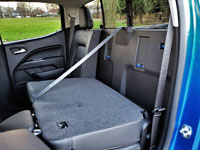
I think most of us could live without such a luxury, but I really appreciate having proximity-sensing entry and a pushbutton ignition system. The ZR2 doesn’t get a sunroof either, which might bother those wowed by Jeep’s removable roof. I appreciated the padded sunglasses holder on the overhead console, and the reading lights were decent enough, but they’re only incandescent lamps, not LEDs. The centre mirror is auto-dimming, however, plus along with OnStar it includes a button for voice activation as well as an “SOS” one to reach out for help when required.
A row of useful switches can be found on the centre stack too, including one for turning off the stability control, plus a bed light, hill descent control, an exhaust brake that’s useful when towing, a hazard light, and finally two individual toggles for the front and rear differential locks noted before.
Trailering in mind, the ZR2’s towing capacity is rated at 2,268 kilos (5,000 lbs) no matter which engine is being used, while its payload is a sizeable 500 kilograms (1,100 lbs) with the four-door short-bed or 528 kg (1,164 lbs) with the extended-cab long-bed. The Tacoma TRD Pro, on the other hand, is capable of a 2,900-kg (6,400-lb) tow rating and a payload of 454 kg (1,000 lbs), whereas the Gladiator Rubicon (the closest to the ZR2) can trailer up to 2,040 kg (4,500 lbs) and haul a payload of up to 544 kg (1,200 lbs) with the manual, or drag 3,175 kg (7,000 lbs) of trailer weight or carry 526 kg (1,160 lbs) on its backside when equipped with its automatic.
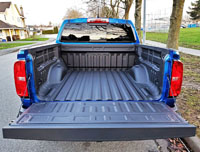
You may have noticed that I haven’t covered all of the ZR2’s comfort and convenience features in this review, but take note they’re easily available on the Chevrolet retail website or right here at CarCostCanada, where I sourced all 2019 Colorado pricing info including trims, packages and standalone options, not to mention money-saving rebate info and dealer invoice pricing. Suffice to say it’s well equipped for its $46,100 Extra Cab base price, or $47,600 when opting for the Crew Cab, plus freight and fees of course.
No matter the Colorado ZR2 powertrain you choose, you’ll be getting a well-designed mid-size pickup truck that can overcome nearly any obstacle on or off the road. I’d opt for the diesel with the Bison upgrade and find an aftermarket snorkel, but hey, it’s easy to say that without following through on a payment plan. It’s great that Chevy provides so many options, allowing plenty of opportunity to personalize.
Story credit: Trevor Hofmann
Photo credit: Karen Tuggay

